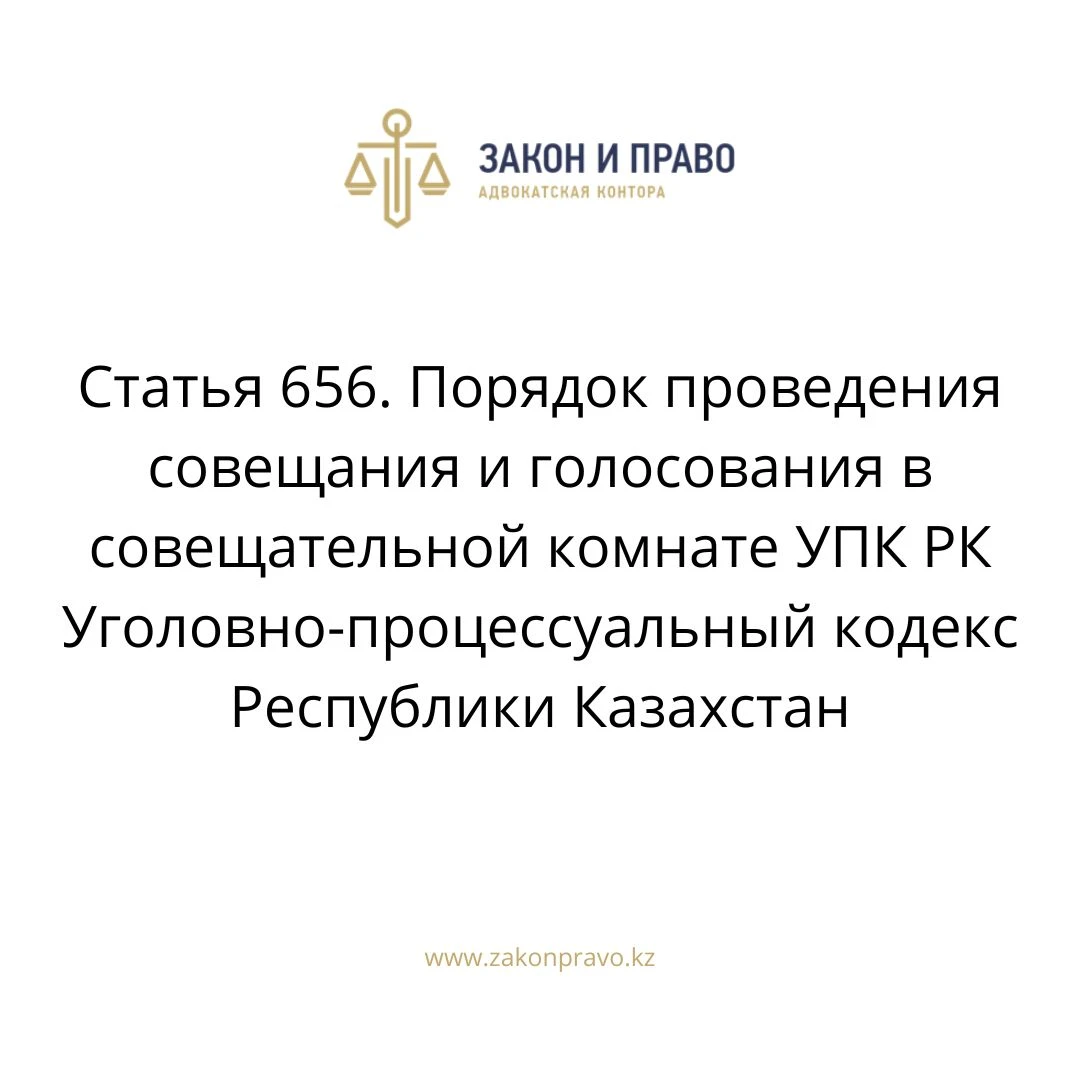Article 656. The procedure for holding meetings and voting in the conference room of the CPC RK Criminal Procedure Code of the Republic of Kazakhstan
1. The chairman directs the meeting of the jury, consistently puts the issues to be resolved for discussion, votes on the answers and counts the votes.
1-1. The chairman provides the content of the charge; informs the content of the criminal law; sets out the positions of the public prosecutor and the defense; explains the procedure for filling out ballots, as well as the procedure for voting on sentencing.
2. In the deliberation room, jurors have the right to receive clarifications from the presiding judge on any ambiguities they may have in connection with the questions raised.
3. Voting on the main and additional issues is conducted in secret and in writing. The judge and the jury have no right to abstain from voting. The votes of the judge and the jury are equal.
4. The judge and the jurors shall receive blank ballots with the stamp of the court for voting, each of which contains the following words: "In my honor, conscience and inner conviction, my conclusion is...", according to the number of defendants and the number of questions they must answer. To ensure the secrecy of the vote, each of them writes on the ballot the answer to the question put on the questionnaire and subject to resolution. The answer should be an affirmative "yes" or negative "no" with a mandatory explanatory word or phrase that reveals the essence of the answer ("yes, proven", "no, not proven", "yes, guilty", "no, not guilty"). The judge and the jurors put their ballots in the ballot box.
5. After the end of voting on the first of the questions posed, the chairman opens the ballot box and counts the votes of each ballot in the presence of the jury, and immediately writes down the result of the vote count opposite the first of the three main questions indicated on the questionnaire.
In the same order, the jurors and the judge vote sequentially on each of the main and then additional questions posed in the questionnaire.
6. The ballots with the answers of the jurors and the judge are sealed in an envelope, which is kept in the criminal case.
7. If the answer to the previous question precludes the need to answer the subsequent question, the presiding judge, with the consent of the majority of the jurors, enters the words "unanswered" after it.
8. A guilty verdict is considered accepted if the majority of the voters voted for the affirmative answers to each of the three questions specified in the first part of Article 654 of this Code.
9. An acquittal verdict is considered accepted if six or more voters voted for a negative answer to any of the main questions raised.
10. If the question of the defendant's guilt is resolved positively, the judge resolves the question of whether the act is a crime and what kind of criminal law it is provided for in (article, part, paragraph), and also explains to the jury what penalties are provided for these acts.
If, upon the affirmative answers of the jurors to the questions specified in the first part of Article 654 of this Code, the judge concludes that there are no signs of a crime in the act, and therefore it does not constitute a crime, and also establishes other circumstances provided for in Article 36 of this Code, he shall, in accordance with paragraph 1) Article 657 of this Code issues a resolution on the termination of the criminal case.
11. The qualification of the defendant's act under the relevant article of the Criminal Code of the Republic of Kazakhstan is determined by a judge without the participation of a jury. Further, the judge, with the participation of jurors, decides without interruption the issues provided for in paragraphs 5) 6), 7), 8) and 14) the first part of Article 390 of this Code, the decision on which is made by open voting. Decisions are considered adopted if the majority of those voting voted for them.
Issues stipulated by paragraphs 9), 10), 11), 12), 13), 15), 16), 17) and 18) parts one and five of Article 390 of this Code, are considered by the judge independently.
12. A penalty of imprisonment for a term exceeding fifteen years may be imposed if eight or more voters voted for such a decision.
13. Life imprisonment may be imposed only if there is a unanimous decision of the judge and the jury.
14. The question sheet with the answers of the judge and the jurors is signed by the judge and the jurors and attached to the case file.
President
Republic of Kazakhstan
© 2012. RSE na PHB "Institute of Legislation and Legal Information of the Republic of Kazakhstan" of the Ministry of Justice of the Republic of Kazakhstan
Constitution Law Code Standard Decree Order Decision Resolution Lawyer Almaty Lawyer Legal service Legal advice Civil Criminal Administrative cases Disputes Defense Arbitration Law Company Kazakhstan Law Firm Court Cases


